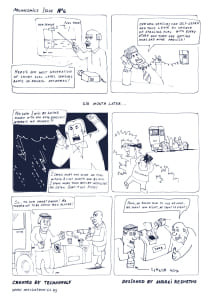Many GPS tracking installations are bonded with CAN bus data analysys. On-board electronic modules contain a lot of data about the operation of the machine – sensor values, loading or unloading events, diagnostic trouble codes and much more. Data can be transmitted either using standard exchange protocols (FMS protocol / SAE 1939), typical for trucks and commercial vehicles, and non-standard (cars), or according to the undocumented parts of standard protocols.
An example of CAN bus reverse engineering with a popular CAN-Hacker device:
But what we can do if there are few CAN-bus specialists, but a lot of cars to work with?
In this case, the can2sky.com cloud-based decoding service can help. To work with the service, free registration is required, as well as a recorded CAN-log in text format. The service supports various log formats using a universal loader, so you can upload logs recorded by a wide variety of devices – Can-hacker, the candump Linux utility, Busmaster and Peak CAN utilities, etc.
You can read more about uploading process in the document.
After the log has been uploaded, the server will try to decrypt it using the available parsers-decoders. The decoder is DBC-format files. DBC file describes the rules for parsing CAN bus data. You can create it yourself (for example, in the Vector CANdb ++ editor), you can try to find a DBC file for your vehicle in the OpenDBC project, or use one of the available parsers on the can2sky.com service. The number of matching identifiers is displayed in brackets after the decoder’s name.
Left part of screen – a list of CAN identifiers which are active in this log. Some of them are reckognized by DBC-parser, some – not (marked with red background).
Value column shows minimum and maximum parameter value during log. You can change a period for analysis using Time Filter range settings. If you click on parameter in the parameter’s list – it becomes green. Table of values will appear and parameter plot.
You may zoom plot with left mouse button and selecting a part of plot. You can built several plots at once, also you can combine plots from different log-files. To choose another source of parameters you can click on listbox of loaded logs.
The rules of CAN-bus messages decoding are described by DBC-files. Each parameter (SPN) has its own decoding rule which you can edit, clone or delete in SPN editor.
Depending on the settings, the uploaded log can be either public (open to everyone) or private (default setting). Public logs can be commented by other users.
In CAN bus hacking it is very important be in the professional community. Therefore, the can2sky.com service allows you to find colleagues who are decrypting similar objects. Through the search, you can find the owners of the uploaded logs for the equipment you need and send them a message by e-mail.
You can read more about the functions of the service in the manual. The service is completely free!

















We are in social media
Facebook
LinkedIn
Youtube